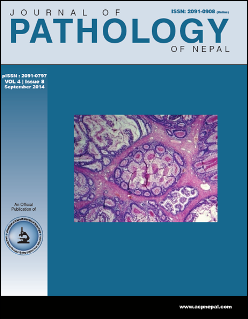Beta thalassemia - a review
DOI:
https://doi.org/10.3126/jpn.v4i8.11609Keywords:
Beta Thalassemia, Carrier detection, Mutation, Prental diagnosisAbstract
Thalassemia is a globin gene disorder that results in a diminished rate of synthesis of one or more of the globin chains. About 1.5% of the global population (80 to 90 million people) are carriers of beta Thalassemia. More than 200 mutations are described in beta thalassemia. However not all mutations are common in different ethnic groups. The only effective way to reduce burden of thalassemia is to prevent birth of homozygotes. Diagnosis of beta thalassemia can be done by fetal DNA analysis for molecular defects of beta thalassemia or by fetal blood analysis. Hematopoietic stem cell transplantation is the only available curative approach for Thalassemia. Many patients with thalassemia in underdeveloped nations die in childhood or adolescence. Programs that provide acceptable care, including transfusion of safe blood and supportive therapy including chelation must be established.
DOI: http://dx.doi.org/10.3126/jpn.v4i8.11609
Journal of Pathology of Nepal; Vol.4,No. 8 (2014) 663-671
Downloads
Downloads
Published
How to Cite
Issue
Section
License
This license enables reusers to distribute, remix, adapt, and build upon the material in any medium or format, so long as attribution is given to the creator. The license allows for commercial use.




